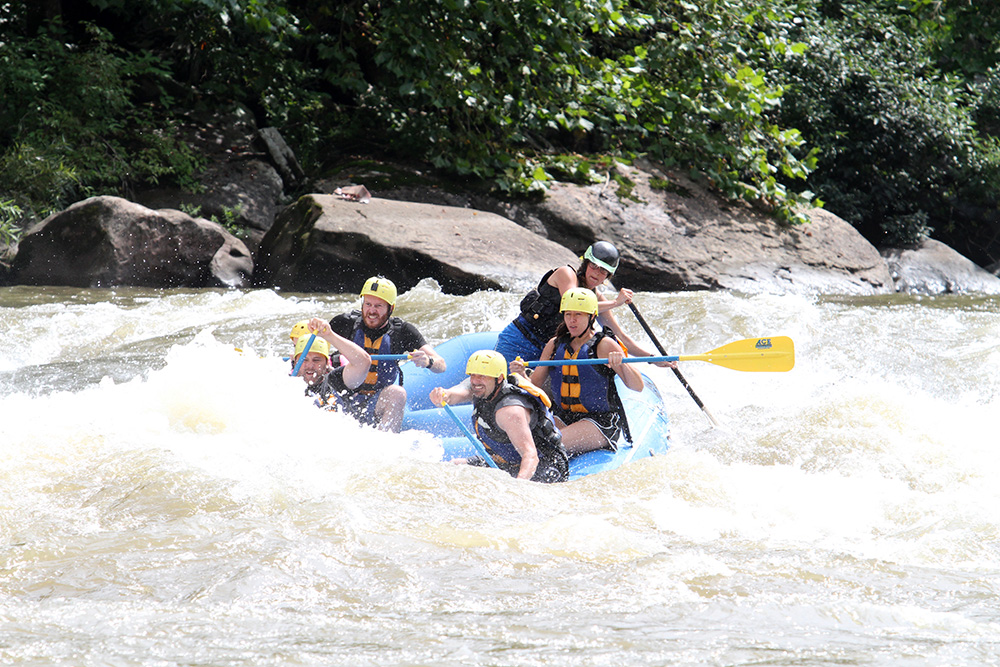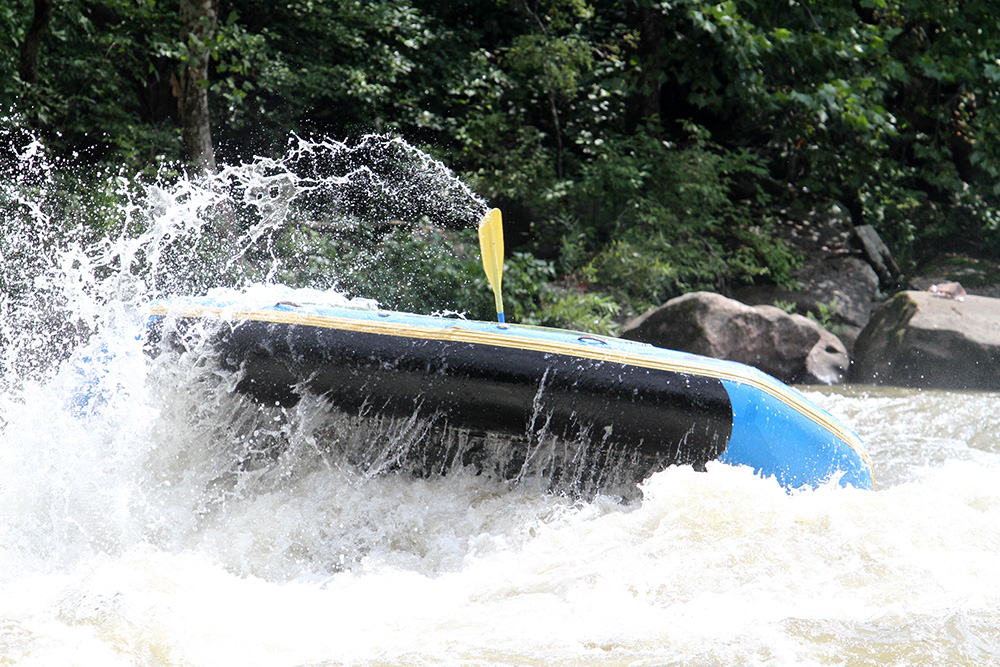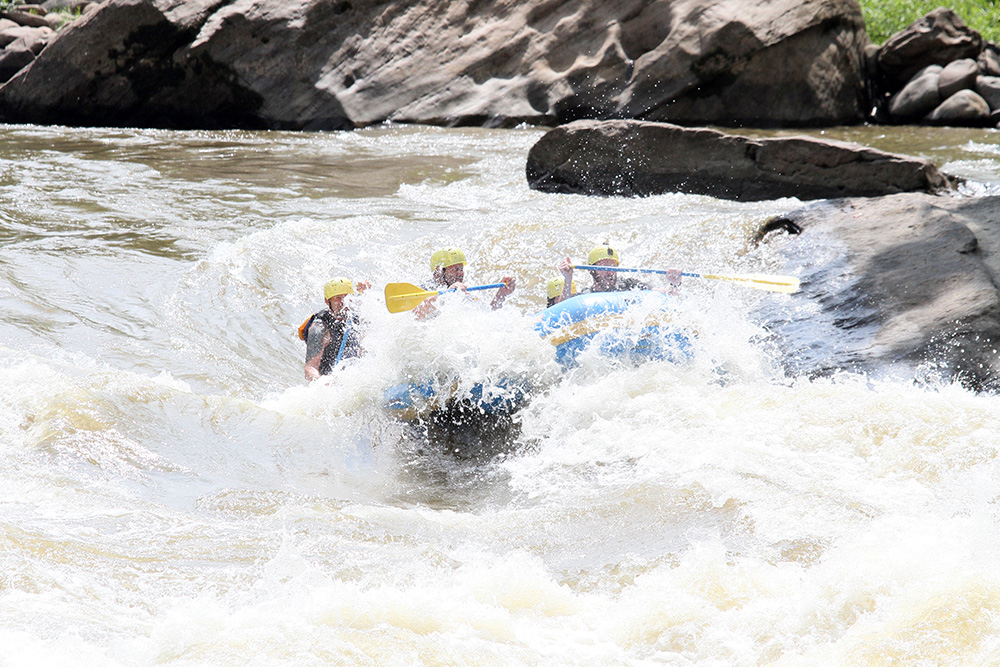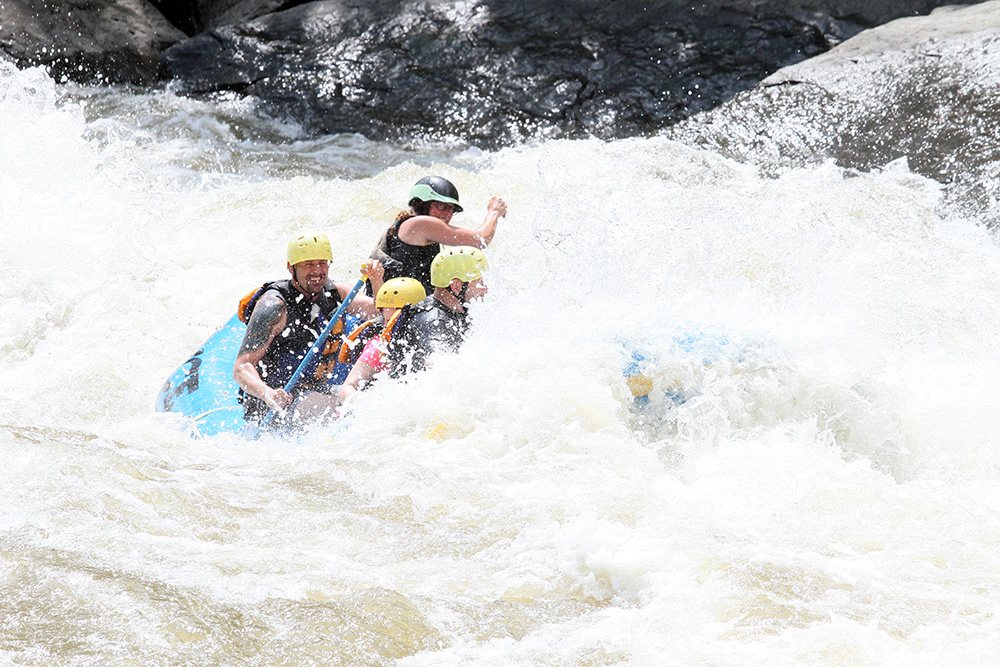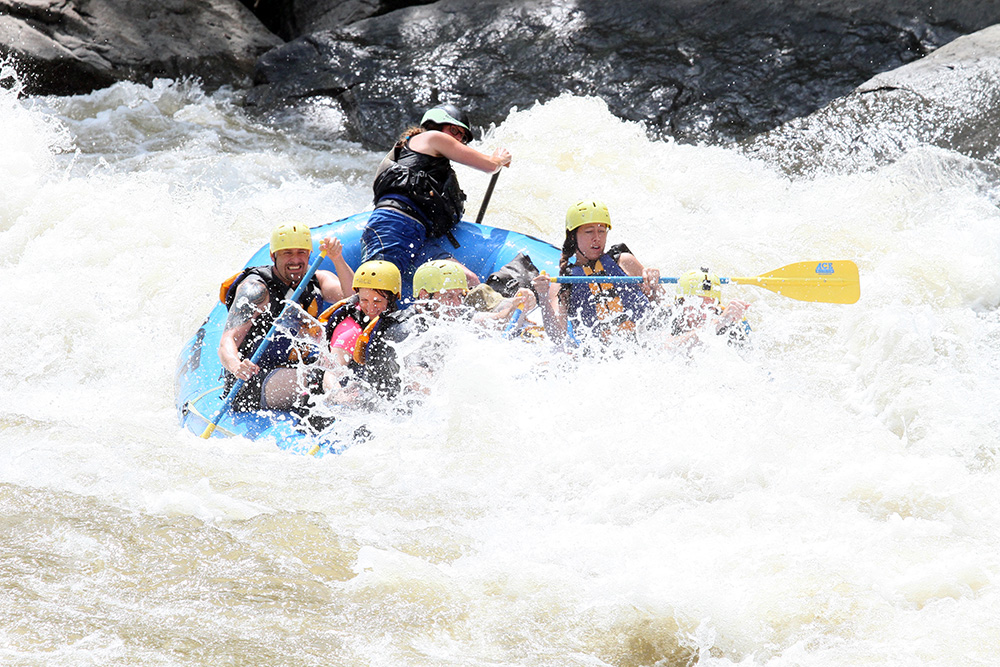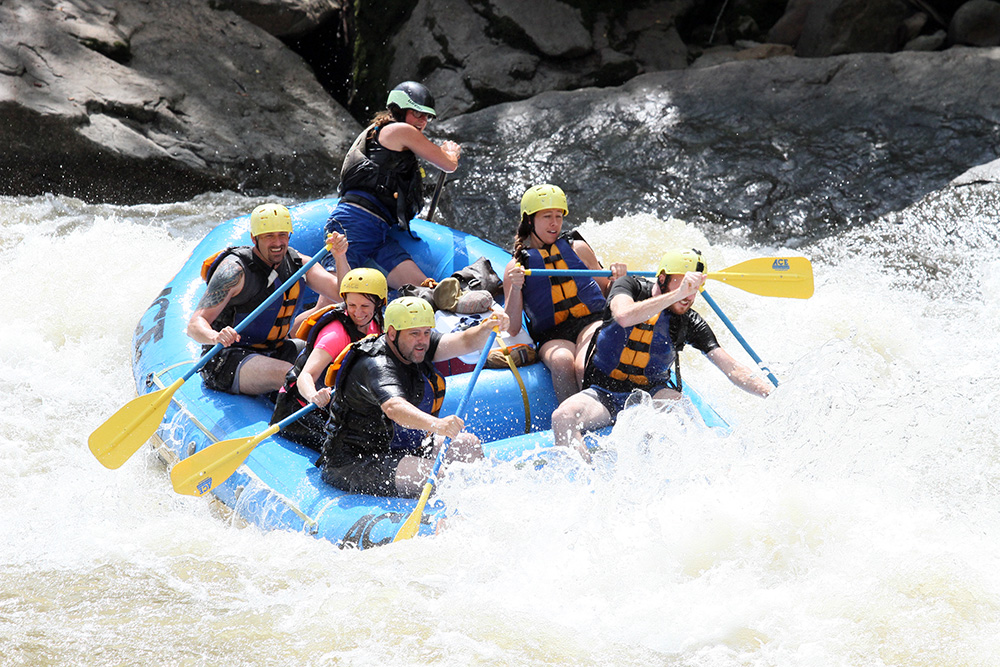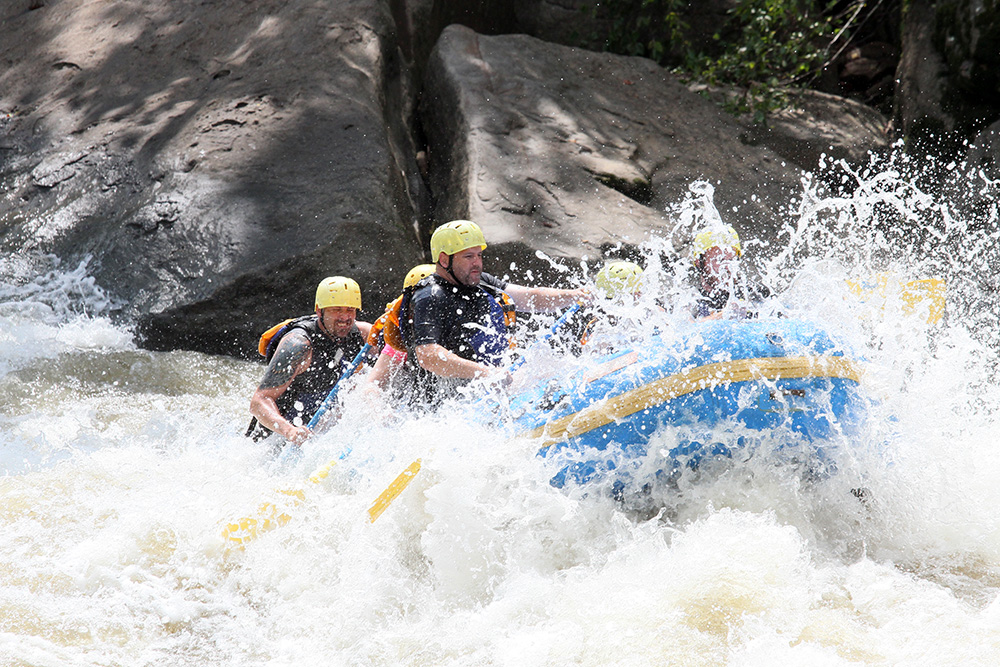Return to the New River Gorge
…continued from Weekend 1: Cycling the Skyline Drive
I had unfinished business with the New River. I had been to it once already in my packraft, and never did get to see the whole thing. I remember getting to my launch point for that trip by train, and as I stood between train cars scouting the river, I saw all of the huge Class IV-V rapids of the Lower New River, with countless guided rafts crashing through the turbulent water. It was hypnotic, terrifying, and awesome to watch. And though I was on my way to tamer water that day, I knew I had to come back and paddle it next time.
I got back home a few days later, determined to get back to the Lower River and run it next year.
Last summer, I got my chance. I persuaded my dad to book a reservation at Hawk’s Nest Resort, an old lodge along the east canyon rim a few miles downstream from the rapids (he didn’t need much convincing; he likes the New River Gorge just as much as I). We left on a family weekend trip to the resort, and I borrowed the van on Saturday morning to drive down the road to Ace Raft, the biggest rafting outfitter in the area.
I got registered at the main tent and boarded a shuttle bus to the put-in just downstream from Thurmond, right where I left the gorge last time. I was placed in a group with two couples from North Carolina, and Shanna, a river guide of seven years.
We pushed out into the morning fog and paddled through a few miles of flatwater and a few easy, spread out warmup rapids. Both of the guys had been rafting before, neither of the girls had, and though I knew what to do in a packraft, I had never paddled in a guided twelve footer. Shanna made the most of our time in the calm water and taught us how to paddle as a group.
Our first big run of the day was Surprise Rapid, a Class III a few miles downstream. It is characterized by a big hit at the bottom of the rapid, which at the onset just looks like any normal breaking wave. It’s not until you clear the wave before it that you can see what it actually is – a pourover hole with a huge, churning hydraulic. Any new boater in that rapid won’t know what they have coming.
Shanna did, and steered us right at it. And as mentally prepared as I was, I was not ready to see the horrifying wall of foam that we crashed into, or to hear it roar at us like a beast. I felt like a deer staring into the headlights of an eighteen wheeler. The hydraulic slammed into us, thrashing the boat sideways, throwing me and three other people out.
I tumbled around in the turbulent water and washed into a calming wave train, disoriented, some ten feet away from the boat. After a moment, I got it together and swam back as Shanna scrambled to get the others back in. Soon, we were back on the boat, trying to recover our breath and our minds.
Despite all the theatrics, it wasn’t as bad as it sounds. The hole doesn’t recirculate enough to keep anything for long, and the rapid washes into a big flatwater pool at the bottom. So even though there is plenty of screwup potential, you’ll wind up in calm water eventually. The guides know this, which is why they almost always go through it, or at least try to.
Further downstream, we went through more Class IV-V rapids, many of whom had big hits of their own, like the hole at Upper Railroad. That one sent the boat into the air at 45 degrees. As we approached each section, Shanna would tell us the name of the rapid, it’s whitewater rating, its key features and hazards, and which way to swim if we fall out. I felt like I was beginning to understand how to read and know a river, be mindful of its hazards, and perhaps most importantly, stay cool when I fall into swiftwater.
Soon, the canyon narrowed, bringing us to the wildest section of the Lower River. Here, there are bigger, more technical rapids with smaller flatwater pools between. The most distinct one is probably Double Z. It is aptly named for the line that boaters have to take to navigate around two undercut rocks in the middle, while avoiding more undercuts on the sides. All of the guides got us through without incident.
Thread the Needle was a rad little swimmer’s rapid that we ran near the end of the day. It had two huge boulders in the middle of the river with a small chute between, just big enough for a kayak or a person. A bunch of us jumped in the water and floated through it. I wasn’t in any danger, but it did feel unnerving to go over an eddy line and feel it pull at my feet.
We got back in and finished the day at Fayette Station, a big Class IV wave train with a smooth center line. It glimmered and raged under the towering arc of the New River Gorge Bridge, which stood more than 800 feet above us. The shuttle and a cooler of cold beer were waiting for us at the takeout on river left.
For the entirety of the trip, Ace sends a kayaker out ahead to film the rafts going through all of the big hits on the river. Once back at the lodge, they will take about an hour to edit the footage into a video and burn DVDs to sell at the lodge store. Our camera boater Tigg finished editing our footage, and came back to the main tent where they had TVs set up to play it for us. Everyone was excited to see themselves onscreen, especially my group. Our wipeout at Surprise Rapid turned out to be the money shot of the day.
I don’t have enough good things to say about the New River. I’ve been on it twice now, and both times were amazing.
But this was all just a warmup. I was two weeks approaching the opening weekend of Gauley Season, and that was some serious shit.
